Overview of Health Information Technology and Government Promotion
Health Information Technology (HIT) encompasses various technologies for processing, storing, and sharing patient information electronically. The Federal government has promoted HIT through legislation like HIPAA and HITECH, offering incentives for adoption by providers.
Download Presentation

Please find below an Image/Link to download the presentation.
The content on the website is provided AS IS for your information and personal use only. It may not be sold, licensed, or shared on other websites without obtaining consent from the author.If you encounter any issues during the download, it is possible that the publisher has removed the file from their server.
You are allowed to download the files provided on this website for personal or commercial use, subject to the condition that they are used lawfully. All files are the property of their respective owners.
The content on the website is provided AS IS for your information and personal use only. It may not be sold, licensed, or shared on other websites without obtaining consent from the author.
E N D
Presentation Transcript
Health Information Technology Created by the School of Pharmacy Relations Committee for AMCP Updated: March 2022
Overview Understand the history of Health Information Technology (HIT) and its promotion by the Federal government Understand some of the main components of HIT today EMR/EHR PHR E-Prescribing and CPOE Conceptualize the flow of information in an ideal HIT environment Review advantages that HIT will bring to the practice of healthcare
What is Health Information Technology (HIT)? HIT, or health IT, encompasses a broad array of technologies involved in the processing, storing, and sharing of patient information electronically, rather than through paper records E-Prescribing and Electronic Health Records (EHRs) are just examples of the growing landscape of HIT Promotion of HIT innovation and adoption is heavily sponsored by the US government, including monies being paid to providers to incentivize the use of new technology as well as financial consequences for not adopting new technology
Background The Federal government promotes HIT through legislation 1996: The Health Information Portability and Accountability Act (HIPAA) mandated the use of standardized electronic transactions 2003: Medicare Drug Improvement and Modernization Act (MMA) further promoted HIT by setting requirements and incentives for adoption by providers and payers 2006: Physician Quality Reporting Initiative (PQRI) gives financial incentives to physicians for utilizing e-prescribing 2008: Medicare Improvements for Patients and Providers Act (MIPPA) created financial incentives on Part B claims for providers who used e-prescribing at least 50% of the time beginning in 2009 while those who did not adopt by 2012 would suffer penalties in reimbursement
Background Contd The Federal government promotes HIT through legislation 2009: Health Information Technology for Economic and Clinical Health (HITECH) component of the American Recovery and Reinvestment Act (ARRA) $29 billion was set aside to encourage adoption of Electronic Health Records (EHR) Meaningful Use came from this act which is meant to give financial incentive to Meaningful Users of EHRs Meaningful Use of EHR is meant to enable significant and measurable improvements in population health through a transformed health care delivery system. The ultimate vision is one in which all patients are fully engaged in their healthcare, providers have real-time access to all medical information and tools to help ensure the quality and safety of the care provided while also affording improved access and elimination of health care disparities. 1 2010: Affordable Care Act (ACA) Helps to expand the use of HIT by establishing comprehensive health care insurance reforms that aim to increase access to health care, improve quality and lower health care costs, and provide new consumer protections
Meaningful Use The Office of the National Coordinator for Health Information Technology (ONC or ONCHIT) has laid out five public policy priorities to define Meaningful Use: 1. Improve quality, safety, efficiency and reduce health disparities 2. Improve population and public health 3. Ensure adequate privacy and security protections for protected health information 4. Engage patients and families 5. Improve care coordination This is separated into 3 stages 1. Data Capture & Sharing (2011) 2. Advanced Clinical Processes (2013) 3. Improved Outcomes (2015) A certified EHR must be used to qualify for Meaningful Use
Electronic Medical Records (EMR)/ Electronic Health Records (EHR) Meaningful Use centers around the use of an Electronic Health Record The difference between an EMR and an EHR lies in its accessibility An EMR is an electronic medical record within a single health organization An EHR can be seen by authorized clinicians/staff across organizations In order to share this information accordingly, information must flow into a central area so that it can be accessed by other organizations The National Health Information Network (NHIN) allows this information exchange across providers and organizations Health Information Exchanges (HIE) allow local areas to consolidate data Data is collected through the EHR at the local practice EHR will allow seamless utilization of providers for patients, but adoption of this technology is the key
The Flow of Information NHIN Other Health Care Other Health Care Health Plans Health Plans Local HIE Local HIE Legend NHIN = National Health Information Network HIE = Health Information Exchange PHR = Personal Health Record PMS = Pharmacy Management System Lab & Imaging Lab & Imaging Hospita l Hospita l Group Practice EHR Group Practice EHR Pharmacy Pharmacy PHR PHR PMS PMS
EHR Advantages Earlier detection of infectious disease outbreaks Improved care for chronic diseases Improved ability to evaluate health care through the national collection of de- identified price and quality information Productivity and financial efficiency through improved work processes Improvement of reimbursement processes Quality monitoring for payers Care coordination And more that is yet to be discovered
Personal Health Records (PHR) PHR is an electronic health record that is managed, shared and controlled by the individual A counterpart to the EHR Some payers offer this service, also privately offered Allows tracking of individual utilization including use of OTCs and other medical history not always seen in the EHR Allows patients to be more involved in their healthcare Creates better engagement by patients Adoption of this technology is slow due to the need for patient involvement and ownership
E-Prescribing and Computerized Physician Order Entry (CPOE) Using electronic tools to prescribe and transmit medication information to pharmacies (and payers) Recent reports indicate that 70% of e-prescribing occurs within the EHR Core function is to reduce error due to illegible handwritten prescriptions Advancement of e-prescribing Incorporation of clinical decision support (real-time formulary information) Prior Authorization fulfillment at the point of prescription (ePA) Access to EHR to reduce medication errors including interactions and contraindications July 2010: DEA allowed e-prescribing of controlled substances Allows real-time bi-directional connectivity between the pharmacy and prescriber (and also the payer in some cases)
E-Prescribing Contd E-prescribing can further the patient healthcare experience and increase efficiency at the point of prescription Immediate transfer of the prescription to the patient s chosen pharmacy Insurance eligibility Formulary placement of the medications (including possible alternatives that are favorable on the formulary) Prior Authorization fulfillment at point of prescription if/when necessary (ePA) Electronic authorization of refill requests Payers are investing in new technology to improve e-prescribing and take full advantage of the direct communication with prescribers Handheld and Web-based applications for this communication and outreach
E-Prescribing Contd Prescriber / e-prescribing system Payer Eligibility, formulary, prior authorization request/response Pharmacy via EDI (e.g. Surescripts) Rx Clean prescription adjudication
Conclusion Although new challenges arise from new technology, the value of HIT will outweigh the risk Interoperability and connectivity issues Alert fatigue- Errors due to complacency with the convenience of technology (checking the wrong box, forgetting to send , etc.) Adoption is a key component to the success of HIT Universal utilization will allow complete understanding of a person s healthcare to any authorized provider Adoption of standardization to allow all authorized providers to receive and process health information is also important Advancement of quality and safety should continue to be one of the primary goals of HIT
Mission & Vision To improve patient health by ensuring access to high-quality, cost-effective medications and other therapies.
Thank you to AMCP SOPRC members for updating this presentation for 2022.
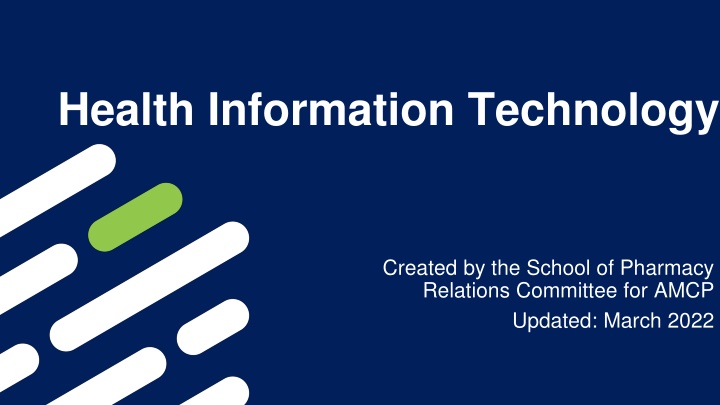

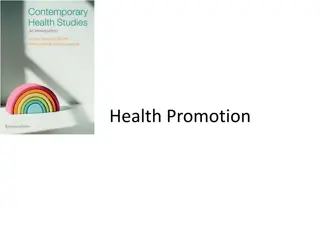

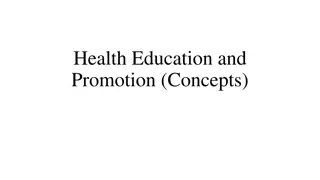
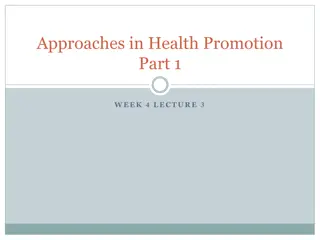
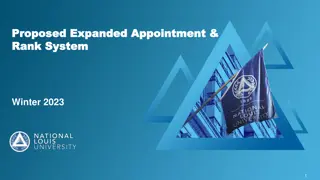
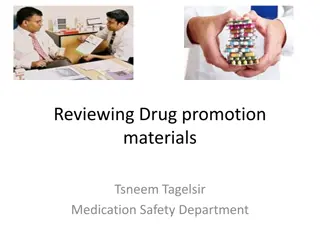

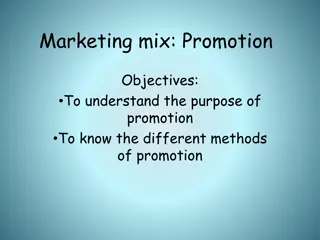
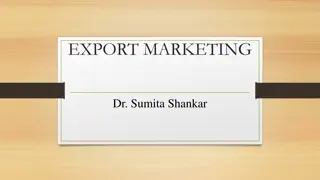
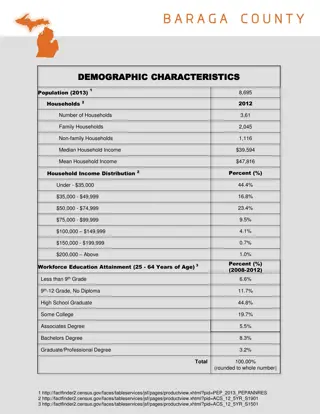
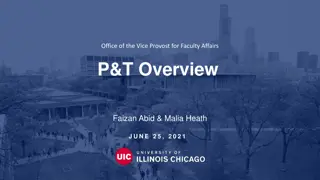
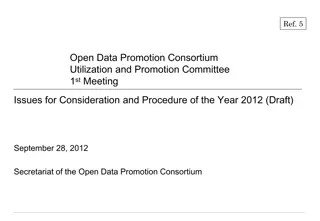
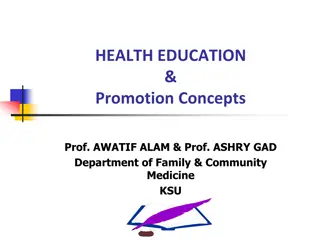



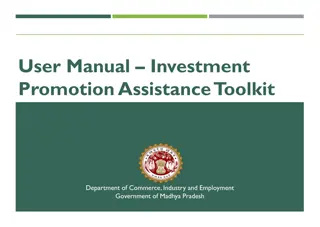

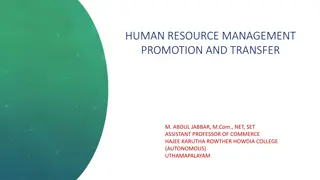


![Lec [2] Health promotion](/thumb/274962/lec-2-health-promotion-powerpoint-ppt-presentation.jpg)